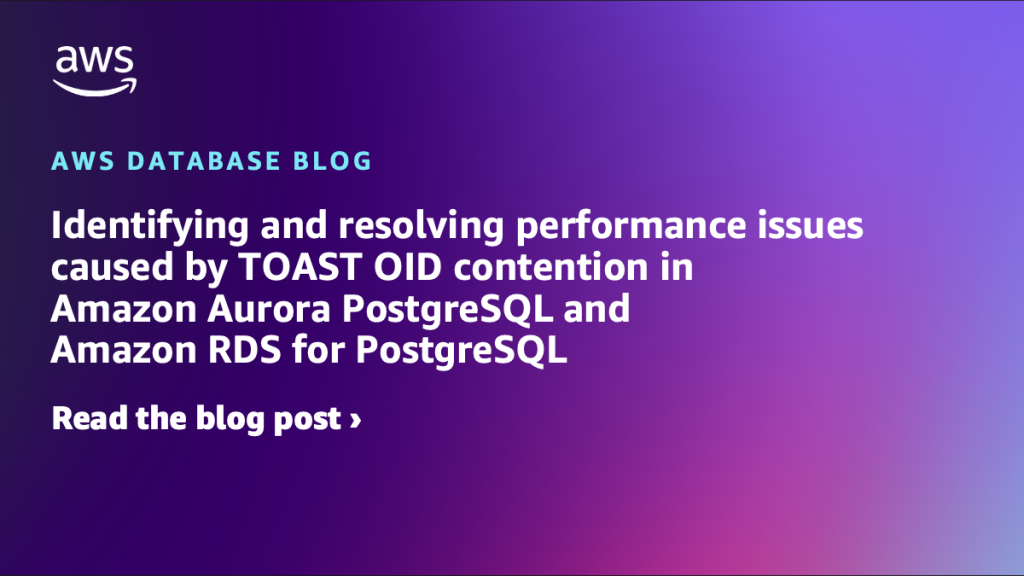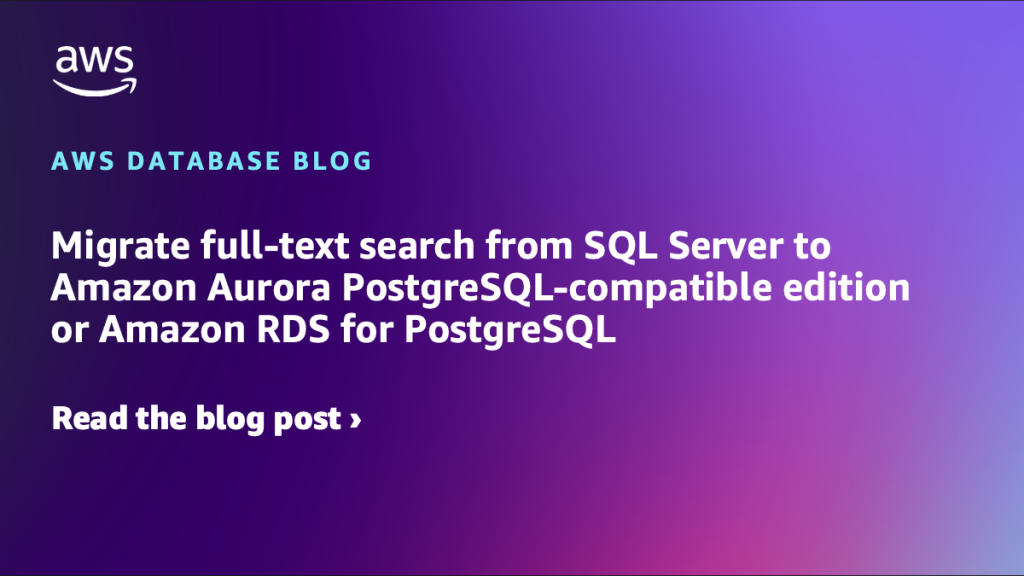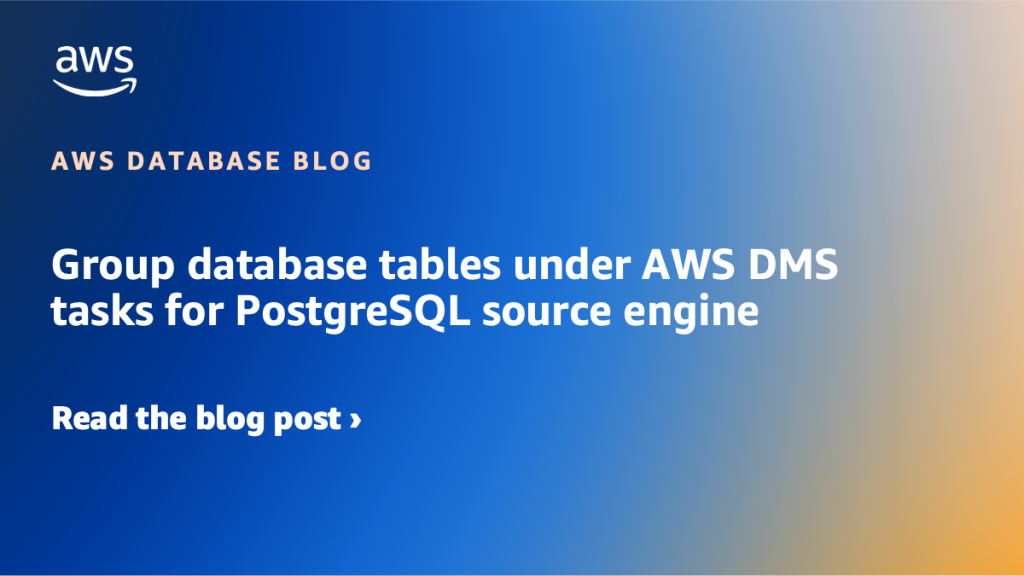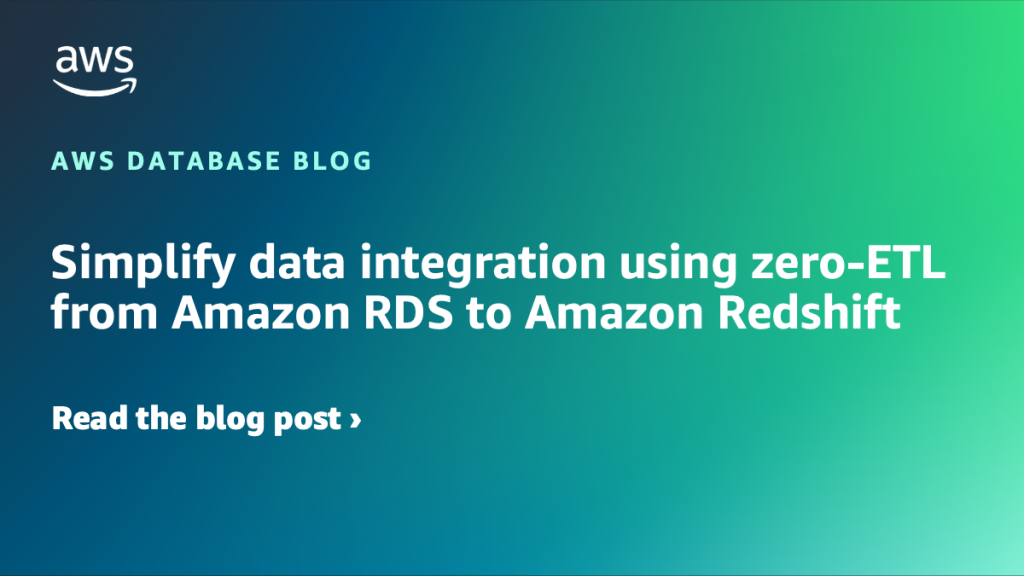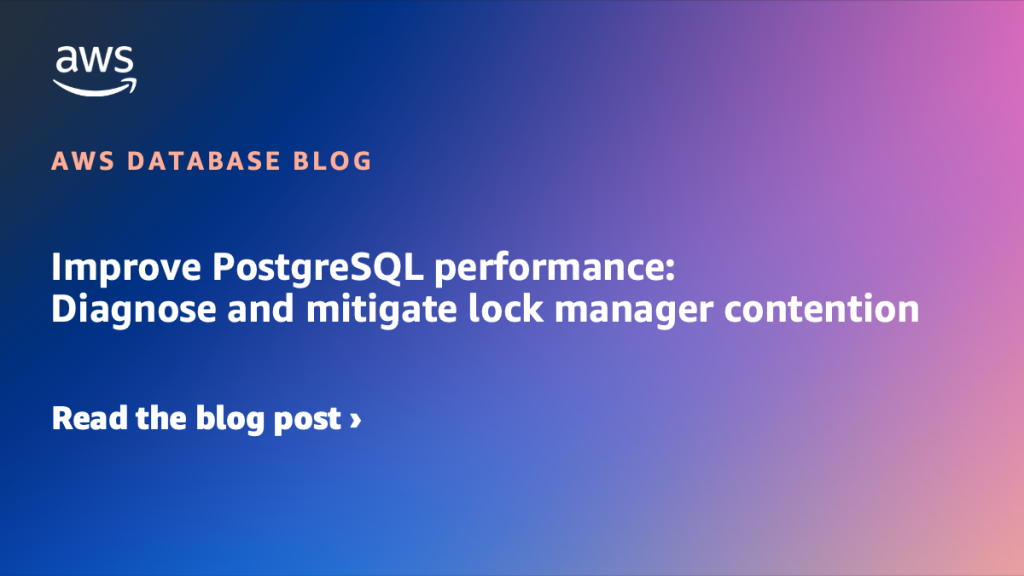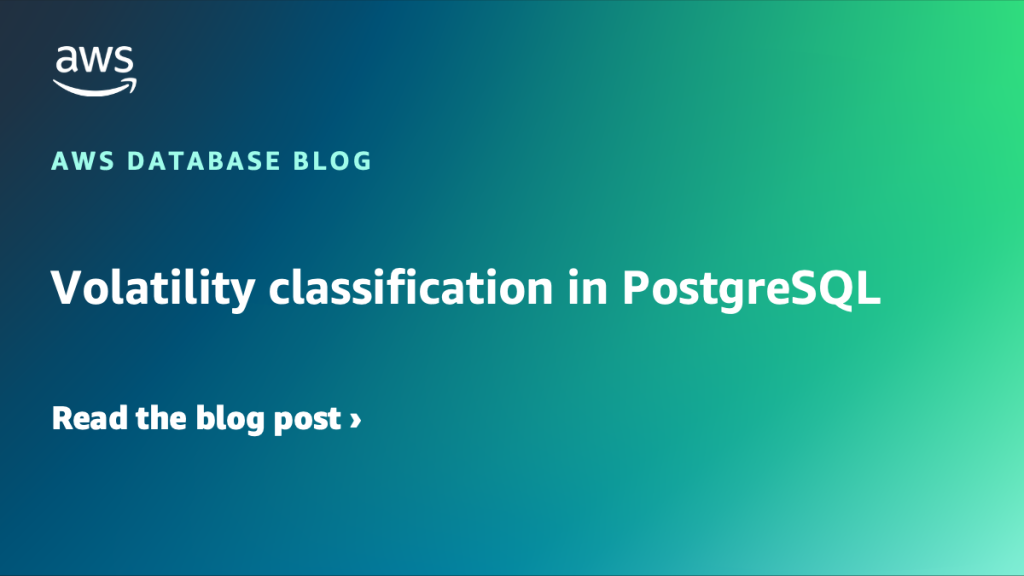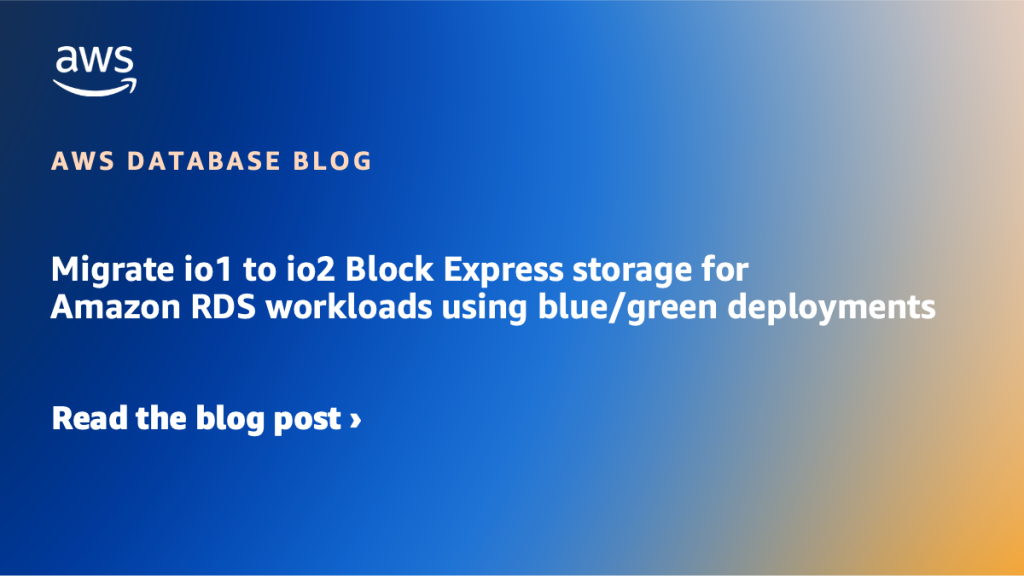AWS Database Blog
Category: RDS for PostgreSQL
Identifying and resolving performance issues caused by TOAST OID contention in Amazon Aurora PostgreSQL Compatible Edition and Amazon RDS for PostgreSQL
In this post, we explore the challenges of OID exhaustion in PostgreSQL, focusing on its impact on TOAST tables and how it leads to performance issues. We will cover how to identify the problem by reviewing wait events, session activity, and table usage. Additionally, we discuss practical solutions, from cleaning up data to more advanced strategies such as partitioning.
Migrate full-text search from SQL Server to Amazon Aurora PostgreSQL-compatible edition or Amazon RDS for PostgreSQL
In this post, we show you how to migrate full-text search in Microsoft SQL Server to Amazon Aurora PostgreSQL using text searching data types tsvector and tsquery. We also show you how to implement FTS using pg_trgm and pg_bigm extensions.
Group database tables under AWS Database Migration Service tasks for PostgreSQL source engine
AWS DMS accommodates a broad range of source and target data repositories, such as relational databases, data warehouses, and NoSQL databases. Proper preparation and design are vital for a successful migration process, especially when it comes to optimizing performance and addressing potential delay issues. In this blog post, we offer guidance about recognizing potential root causes of complete load and CDC delays early in the process and provide suggestions for optimally clustering tables to achieve the best performance for an AWS DMS task.
Simplify data integration using zero-ETL from Amazon RDS to Amazon Redshift
Organizations rely on real-time analytics to gain insights into their core business drivers, enhance operational efficiency, and maintain a competitive edge. Traditionally, this has involved the use of complex extract, transform, and load (ETL) pipelines. ETL is the process of combining, cleaning, and normalizing data from different sources to prepare it for analytics, AI, and […]
Improve PostgreSQL performance: Diagnose and mitigate lock manager contention
Are your database read operations unexpectedly slowing down as your workload scales? Many organizations running PostgreSQL-based systems encounter performance bottlenecks that aren’t immediately obvious. When many concurrent read operations access tables with numerous partitions or indexes, they can even exhaust PostgreSQL’s fast path locking mechanism, forcing the system to use shared memory locks. The switch […]
Volatility classification in PostgreSQL
In this post, we discuss different ways you can use volatility classification with functions in PostgreSQL and provide best practices to help you keep your database optimized and develop efficient and reliable database applications.
Leveling up Amazon RDS with AWS Graviton4: Benchmarks
In November 2024, AWS introduced the latest evolution of its custom-designed ARM-based processors with Graviton4, delivering significant performance and efficiency improvements for Amazon RDS for PostgreSQL, MySQL, and MariaDB and Amazon Aurora. In this post, we focus on Amazon RDS for PostgreSQL and compare the performance of the new Graviton4 instances to both Graviton3 and Graviton2. Using benchmarks, we evaluate throughput, latency, and price-performance, showcasing the advantages of Graviton4 for modern database workloads.
Building a job search engine with PostgreSQL’s advanced search features
In today’s employment landscape, job search platforms play a crucial role in connecting employers with potential candidates. Behind these platforms lie complex search engines that must process and analyze vast amounts of structured and unstructured data to deliver relevant results. This post explores how to use PostgreSQL’s search features to build an effective job search engine. We examine each search capability in detail, discuss how they can be combined in PostgreSQL, and offer strategies for optimizing performance as your search engine scales.
Migrate io1 to io2 Block Express storage for Amazon RDS workloads using blue/green deployments
Amazon RDS provides two storage types: Provisioned IOPS SSD and General Purpose SSD. They differ in performance characteristics and price, which means that you can tailor your storage performance and cost to the needs of your database workload. In this post, we show how you can migrate from io1 to io2 Block Express Provisioned IOPS SSD storage.
Migrate Google Cloud SQL for PostgreSQL to Amazon RDS and Amazon Aurora using pglogical
In this post, we provide the steps to migrate a PostgreSQL database from Google Cloud SQL to RDS for PostgreSQL and Aurora PostgreSQL using the pglogical extension. We also demonstrate the necessary connection attributes required to support the database migration. The pglogical extension works for the community PostgreSQL version 9.4 and higher, and is supported on RDS for PostgreSQL and Aurora PostgreSQL as of version 12+.
